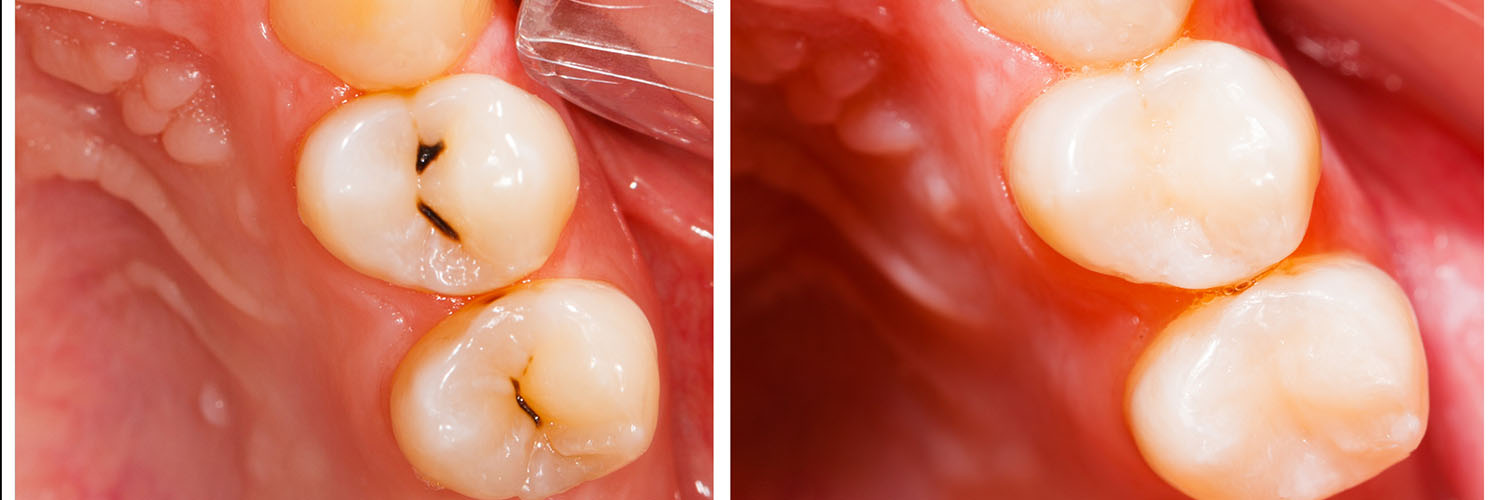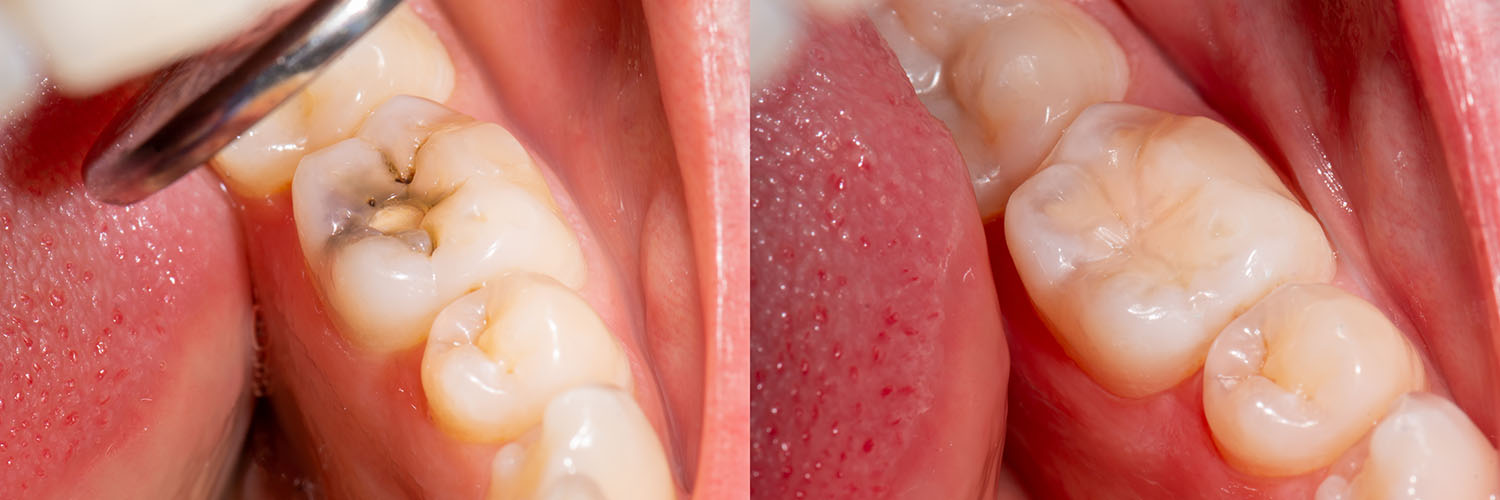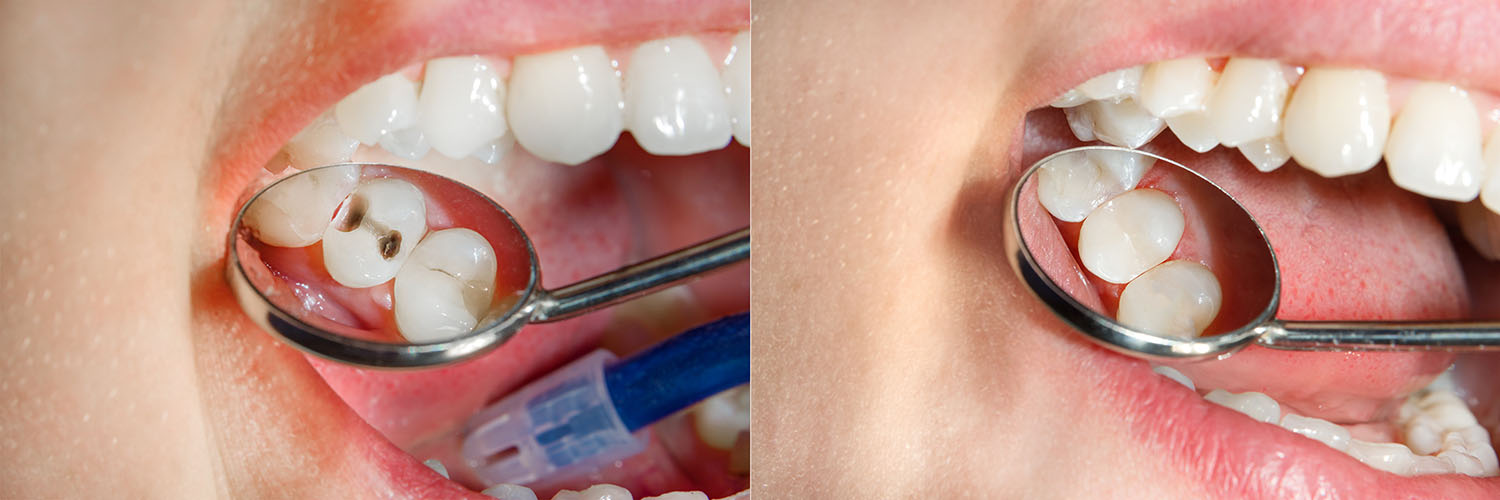
When a tooth’s surface is compromised by decay or wear, a carefully placed filling rebuilds its shape and restores reliable chewing function. Fillings stop the spread of decay, re-establish proper tooth contours, and preserve as much healthy structure as possible so the tooth can continue to perform in everyday life.
Tooth decay remains a widespread concern across all age groups, so restorative dentistry is a routine and essential part of keeping smiles healthy. Advances in materials and techniques mean that today’s fillings are faster to place, more conservative of natural tooth structure, and better at matching the appearance of surrounding teeth than ever before.
At Value Dental Center, we emphasize conservative, evidence-based approaches to repair so patients can return to comfortable, problem-free chewing quickly. Our goal is to provide durable restorations that blend with the smile while protecting the underlying tooth from further damage.
Humans have been attempting to repair teeth for millennia, but the modern science of restorative dentistry progressed dramatically in the last 150 years. Metal alloys such as gold and amalgam were once the backbone of cavity care because of their strength and longevity. These options served many generations well, particularly in back teeth that endure heavy biting forces.
More recently, dental researchers developed tooth-colored restorative materials that bond to enamel and dentin. These newer materials are mercury-free, more aesthetic, and allow dentists to preserve more of the natural tooth during preparation. The shift toward biomimetic repairs—restorations that work with the tooth’s structure rather than replacing it entirely—has reshaped everyday practice.

There is no single “best” filling material for every situation. Each option has advantages depending on where the tooth is located, how large the cavity is, and what aesthetic outcome you expect. Understanding the common choices helps you and your clinician select a restoration suited to your needs and the tooth’s long-term success.
To make decisions clearer, dentists group materials into direct restorations—placed and finished in a single visit—and indirect restorations, which are fabricated in a dental lab before being bonded into the mouth. Direct materials tend to be more conservative and faster; indirect options can offer enhanced strength and longevity for larger repairs.
Below are commonly used materials and what they typically offer in a modern dental practice.
Composite fillings are a blend of resin and microscopic glass particles that can be shaded to match nearby teeth. They bond to tooth structure, which helps seal margins and can reinforce the remaining enamel and dentin. Because they need less removal of healthy tooth when placed, composites are often the preferred choice for visible teeth and for patients who want a natural look.
Composites are versatile and can be contoured to restore anatomy for chewing and speech. They may show wear over many years and can be more prone to staining than ceramic restorations, but with proper care they offer an excellent balance of appearance and function.
Amalgam fillings combine metals that provide exceptional durability in high-stress chewing areas. Though they are not tooth-colored, their longevity remains an advantage, especially for large back-tooth restorations where aesthetics are less critical. Amalgam can tolerate heavy bite forces and is relatively forgiving in moisture during placement.
Glass ionomers bond chemically to tooth structure and release low levels of fluoride, which may provide additional protection against recurrent decay. They are frequently used for pediatric restorations, small fillings near the gumline, or as a temporary measure. While convenient and biologically active, they are generally less wear-resistant than composites or ceramics.
Ceramic restorations are fabricated outside the mouth and then bonded into place. They offer excellent aesthetics and resist staining, making them a durable choice for visible teeth. In cases where a cavity is large or the tooth requires reinforcement, ceramic inlays or onlays can conserve tooth structure while delivering long-lasting, natural-looking results.
Gold is less commonly used today but remains a high-performing restorative material with exceptional wear characteristics and biocompatibility. When longevity and fit are top priorities—particularly in demanding occlusal situations—gold is still a recognized option.

Selecting the appropriate filling is a collaborative process between you and your dentist. We consider the extent of the cavity, the tooth’s position in the mouth, your bite forces, aesthetic preferences, and long-term prognosis. Our priority is to choose a solution that preserves tooth health while meeting your functional and cosmetic expectations.
Small cavities in front teeth often do best with tooth-colored composites, while larger defects on molars may require onlays, indirect ceramics, or even full-coverage crowns to restore strength. If decay has reached the inner layers or the tooth is fractured, additional treatment—such as a root canal or crown—may be discussed to protect the tooth for years to come.
We’ll explain your options clearly, including the rationale for one material over another, so you can make a confident decision. Where appropriate, the practice will show examples of typical outcomes and discuss the maintenance expectations for each restoration choice.
Treating a cavity typically begins with a thorough exam and any necessary radiographs to define the size and depth of decay. Once a plan is agreed upon, the area is comfortably anesthetized, and the decayed material is removed using high-precision instruments such as rotary dental instruments, air abrasion, or lasers when appropriate.
For most direct fillings, the dentist prepares the tooth, places the chosen restorative material, sculpts the anatomy, and adjusts the bite before polishing—all in a single visit that usually lasts about an hour. Indirect options require a brief second visit for final placement after a laboratory fabrication step, and the tooth will be protected with a temporary restoration in the interim if needed.
Throughout the procedure we place a high value on patient comfort. Local anesthesia is standard for most filling appointments, and patients who experience dental anxiety can discuss supportive options such as dental sedation with the team. Clear communication during the visit helps reduce uncertainty and ensures predictable outcomes.
After a filling is placed, it’s normal to experience brief sensitivity or a different sensation when biting. Sensitivity to hot and cold usually subsides within days to weeks as the tooth adapts. Until any local anesthetic has worn off, take care to avoid chewing on the treated side to prevent accidental biting of soft tissues.
Long-term success depends on good oral hygiene and regular checkups. Brush twice daily with fluoride toothpaste, floss daily, and keep routine dental visits so your dentist can monitor the restoration’s margins and overall oral health. Avoiding excessively hard foods and using a nightguard if you grind your teeth can also extend the life of a filling.
Be alert for signs that a filling may need attention: persistent or worsening sensitivity, sharp pain when biting, a visible crack, or a feeling that the bite no longer feels right. If you notice any of these changes, contact the office promptly so the tooth can be evaluated before a small problem becomes more extensive.

In summary, modern dental fillings offer reliable ways to stop decay, preserve tooth structure, and restore normal function and appearance. If you have questions about treatment options or want to know which approach is best for a particular tooth, please contact us to learn more.
If the pleasure of eating a delicious bowl of ice cream or sipping a soothing cup of tea gets overshadowed by dental pain that makes you wince; it's time to contact our office. As skilled providers of care, we'll determine what's causing your discomfort and perform the treatment required to alleviate your symptoms and get you back on the road to oral health.
Cavities develop because of an infectious process that causes progressive damage to tooth structure. Despite starting as a pinpoint defect on the outermost enamel layer of your tooth, untreated dental decay progressively compromises more and more healthy tooth structure as it works its way to the inner layers of your tooth.
Yes, you can still develop tooth decay on other surfaces of the tooth, around the margins of an old filling, or in fewer instances, recurrent decay underneath it. For this reason, it's essential to maintain excellent oral hygiene, a diet low in sugary beverages and sweets, and be sure to visit our office for routine checkups and care. While tooth decay is second only to the common cold in frequency, it's almost entirely preventable.
We value the time and comfort of our patients. If cavities are located on adjacent teeth, or in the same section of your smile, it may be possible to treat more than one tooth during your visit. However, how much is done each visit depends on several factors. We keep our patients well informed and tailor every treatment plan and visit to address their unique needs.
Addressing concerns on the presence of elemental mercury in silver fillings, the American Dental Association (ADA), The Center for Disease Control and Prevention (CDC), the FDA, and the World Health Organization have all stated that amalgam restorations do not pose a risk to health. However, individuals with allergies or sensitivities to the metals in dental amalgam are advised to pursue other restorative options.
Dental fillings are performed under local anesthesia to help ensure your comfort throughout the entire procedure. The involved tooth remains completely numb for the extent of your visit. Within one or two hours after the procedure is completed, the local anesthetic will gradually wear off, and normal sensations return.
A tooth-colored composite filling is fully hardened and set by the end of your visit. However, we may advise you to wait a couple of hours until the local anesthesia has completely worn off. This advice is to help ensure you don't accidentally bite your lip, cheek, or tongue while still numb.
The lifetime of a dental filling varies depending on the type of material used. While popular dental materials can last a decade or more with proper care, they can degrade over time, wear down, or even break. When this happens, you may experience some tooth sensitivity, a jagged edge, or a loose or dislodged piece of filling material. Whatever the case may be, it's essential to get the filling replaced before the tooth sustains further damage or other consequences arise. Beyond taking good care of your smile to help ensure the longevity of your fillings, our office regularly checks the status of your existing fillings as part of a routine checkup exam.
Dental fillings are an essential investment that serves to preserve and protect the health of your smile. With that said, how much a filling costs depends on the number of surfaces of the tooth involved and the filling material that is used. Amalgam restorations are the most economical. While tooth-colored composite fillings have a slightly higher cost, they offer the added benefits of being metal-free and much more aesthetically pleasing. Ceramic fillings, inlays, and onlays are more expensive than the preceding options but provide outstanding, long-lasting, and natural-looking results.
Dental insurances typically cover the cost of dental fillings. While we work with you to maximize your insurance benefits, there may still be an out-of-pocket expense. At the office of Value Dental Center, we strive to help you begin care without any additional financial stress or delay.
Dental fillings are restorative materials placed into a tooth to replace structure lost to decay or damage. They rebuild the tooth's shape and allow it to function normally for chewing and speaking. Fillings also seal the tooth to help prevent further bacterial invasion and decay.
Clinically, fillings stop the progression of cavities and preserve the remaining healthy tooth structure. The choice to place a filling follows a careful diagnosis that considers the size and location of the defect and the overall health of the tooth. When performed correctly, a filling restores comfort, function, and appearance while helping to prevent more extensive treatment later on.
Common dental filling materials include composite resin, dental amalgam, glass ionomer cement, ceramic inlays or onlays, and gold. Composite resins are tooth-colored and widely used for visible areas, while amalgam has a long history of strength and durability for back teeth. Glass ionomer materials bond to tooth surfaces and release fluoride, making them useful in certain clinical situations.
Ceramic and gold restorations are typically used when greater strength or wear resistance is needed and are often fabricated outside the mouth before being cemented in place. Each material has characteristic strengths and limitations related to durability, aesthetics, and suitability for different parts of the mouth. Your dental provider will discuss material options based on the specific requirements of the tooth and your cosmetic preferences.
A cavity is diagnosed through a clinical exam, visual inspection, and often dental radiographs that reveal decay between teeth or beneath restorations. The dentist evaluates the extent of decay and whether the tooth structure can be restored with a filling or if a larger restoration is required. Diagnosis also considers symptoms such as sensitivity, pain, or visible darkening of the tooth surface.
When placing a filling the decayed tissue is gently removed and the cavity is shaped to receive the restorative material, usually under local anesthesia to ensure comfort. The process and material used depend on the chosen restoration; direct materials like composite or glass ionomer are placed and shaped in the mouth, while indirect options such as ceramic inlays require fabrication and later cementation. At the office of Value Dental Center we focus on minimizing discomfort and preserving as much healthy tooth structure as possible during this process.
Tooth-colored composite fillings have improved significantly and can be highly durable for many applications, particularly in small to moderate restorations. Advances in bonding technology and material science have increased their wear resistance and strength, making them a practical choice for both front and many back teeth. However, materials perform differently depending on the location and size of the restoration and the patient's bite forces.
Amalgam remains a durable option for large restorations in high-stress areas, but modern composites and ceramics can offer comparable performance when used appropriately. The longevity of any filling depends on factors such as oral hygiene, diet, and the extent of the original decay. Your dentist will recommend the material that best balances longevity and aesthetics for your specific situation.
Immediately after a filling you may experience lingering numbness from the local anesthetic for an hour or two, which is normal and temporary. Slight sensitivity to hot, cold, or pressure can occur as the tooth settles and usually subsides within a few days to a couple of weeks. You should avoid chewing on very hard foods with the treated tooth until any temporary sensitivity resolves.
If you notice persistent or worsening pain, a bite that feels uneven, or signs of infection such as swelling, contact the office promptly for evaluation. Routine follow-up visits and examinations will help ensure the restoration is functioning correctly and allow the dentist to make any necessary adjustments. Value Dental Center encourages patients to report concerns so issues can be addressed quickly and conservatively.
The lifespan of a filling varies widely depending on the material, size of the restoration, oral hygiene, and chewing habits; some fillings last many years while others may need replacement sooner. Regular brushing, flossing, and avoiding excessive forces on the filled tooth help extend the restoration's life. Routine dental checkups let your provider monitor restorations for wear, leakage, or recurrent decay.
Preventive measures such as fluoride use, a balanced diet low in fermentable carbohydrates, and wearing a night guard if you grind your teeth can all protect fillings from premature failure. If a filling shows signs of wear, fracture, or recurrent decay, early evaluation can often save additional tooth structure. Maintaining good oral habits and timely dental visits are the most reliable ways to preserve restorations and overall oral health.
Yes. Minor damage to a filling, such as small chips or marginal gaps, can sometimes be repaired by smoothing and adding restorative material. When a restoration is extensively worn, fractured, or there is recurrent decay beneath or around it, replacement of the filling or placement of a more protective restoration like an inlay, onlay, or crown may be recommended. The appropriate approach depends on the condition of the remaining tooth and the extent of the problem.
Early detection of issues allows for simpler, more conservative treatment choices, while delayed care can necessitate more complex procedures. Your dentist will explain the available options, the expected outcomes, and the rationale for repair versus replacement during your evaluation. Ongoing monitoring at regular appointments helps catch restoration problems before they progress.
Children require tailored restorative care because primary (baby) teeth have different anatomy and lifespan than permanent teeth. Glass ionomer cements are often used in primary teeth or in situations where fluoride release is beneficial, while composite resins can be used for restorations where aesthetics and function are priorities. The choice of material and technique also accounts for a child's behavior, cooperation, and the location and size of the cavity.
When possible, preserving primary teeth until natural exfoliation supports proper development of speech, chewing, and space maintenance for permanent teeth. Pediatric restorations are designed to be durable enough for the expected time the tooth will remain in the mouth and to minimize the need for repeated visits. The practice will discuss behavior management and, when appropriate, options to make treatment comfortable for younger patients.
Most filling procedures are performed with local anesthesia so patients feel little to no pain during treatment; sensations are typically limited to pressure and vibration. After the anesthetic wears off some mild soreness or sensitivity is common and generally manageable with over-the-counter analgesics as recommended by your provider. Modern techniques and gentle approaches aim to minimize discomfort before, during, and after the appointment.
For patients with dental anxiety or special needs, the office offers additional strategies to improve comfort, including relaxation techniques and discussion of sedation options when appropriate. The dental team will review medical history and preferences to determine safe and effective ways to support a calm experience. Open communication about fears and past experiences helps the clinician tailor care and promote a positive visit.
The selection of a filling material is based on several clinical factors including the size and depth of the cavity, the tooth's location, aesthetic needs, and the patient's bite and oral habits. Dentists also consider the amount of remaining healthy tooth structure and whether an indirect restoration will provide better long-term protection. Material properties such as strength, wear resistance, and bonding ability are weighed against the desire for a natural appearance.
Shared decision-making is important, and your provider will explain the advantages and limitations of the options that suit your situation. The final recommendation balances tooth preservation, function, and cosmetic outcome while aligning with your goals for care. Follow-up visits will ensure the chosen restoration performs well and can be adjusted or replaced if future needs arise.
Quick Links